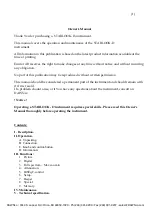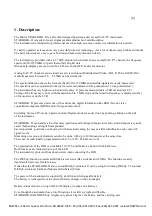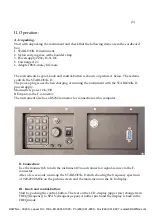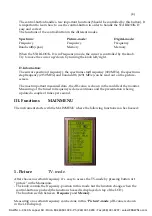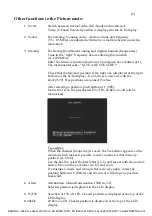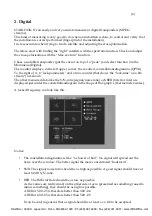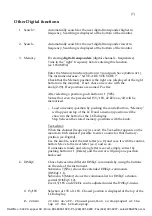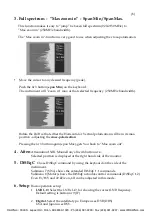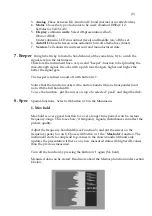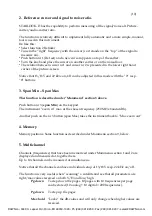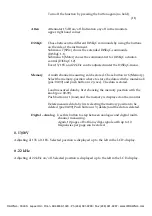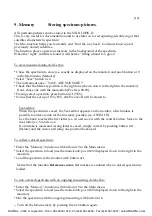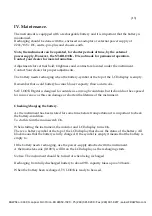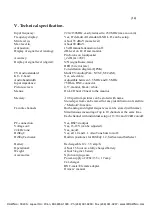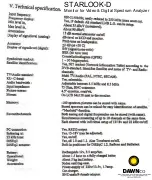
(2)
1. Description:
The Emitor S
TAR
LOOK
-
D is a Swedish designed Spectrum-analyzer and SAT-TV instrument.
S
TAR
LOOK
-
D is made for exact alignment and adjustment of satellite-dishes.
The instrumentet is intended for professional use when high accuracy and precise information is needed.
It´s easily operated as it uses new very powerful processor technology -not a lot of unnecessary buttons and knobs.
The basic functions are easy to get a hold on and takes only minutes to learn.
The instrument is provided with a 4.5" B/W-monitor which either shows normal SAT-TV-channel, the frequency
spectrum 950-2150 MHz (or parts thereof) alt. Digital data.
Menus/help-displays are shown on the LCD-screen (64x128) beside the monitor.
Analog SAT-TV channels can be tuned in and viewed upon (Multistandard Video –PAL, NTSC and SECAM).
Audiofrequencies between 5.5 – 8.5 MHz can be listened to.
The spectrumfunction shows the frequencyband 920-2150 MHz and satellite-signals are easily discovered .
The spectrum can be expanded (zoom in) for correct adjustment of the polarisation (“cross-polarisation”).
The instrument has very high resolution and accuracy. It presents measured data +2 dB (at around 20 C).
Tuning of the frequency is done with the main knob in 1 MHz step and the tuned in frequency is displayed either
on the monitor or on the LCD.
S
TAR
LOOK
-
D presents, under one of the sub menus, digital information like BER (bit error rate),
constellation-diagram (QPSK) and S/N (signal/noise ratio).
Switching between TV-mode, Spectrum-mode, Digital-mode are easily done by pushing a button on the side
of the instrument.
S
TAR
LOOK
-
D can handle a lot of memory-positions and both spectrum-pictures and certain frequencies can be
saved (both analog and digital transponders).
Saved spectrum –positions can be mixed with an actual reading for easy satellite-identification och control of
signal-levels.
Measuring on a group of channels can also be done with up to 10 frequencies at the same time.
These can be individually programmed with 13V or 18V, 22 kHz on or off.
The polarisation of the LNB is switchable 13V/18V and the Hi-Lo band with 22 kHz-tone.
Both functions are indicated on top of the LCD.
The instrument is protected from short-circuit when connecting the LNB.
The DiSEqC-function controls all DiSEqC-accessories (like switches and LNB´s). The function is easily
implemented and very flexible to use.
Notice that the S
TAR
LOOK
-
D also can run DiSEqC-actuators. It can be setup for running DiSEqC 1.2 (normal
DiSEqC-actuators), SatScan (Nokia) and SatSelect (Triax).
The power of the instrument is supplied by a built in and rechargeable battery.
The battery is recharged from the external battery charger or the car-adaptor.
Battery-status is shown on top of the LCD-display (in shape of a battery).
Even though the instrument has a lot of functions it is still very light and flexible.
S
TAR
LOOK Mark III DiSEqC weights only about 4 kg incl. the battery and the carrying-case.
DAWNco • 3340 S. Lapeer Rd • Orion, MI 48359-1320 • Ph (248) 391-9200 • Fax (248) 391-9207 • [email protected]


